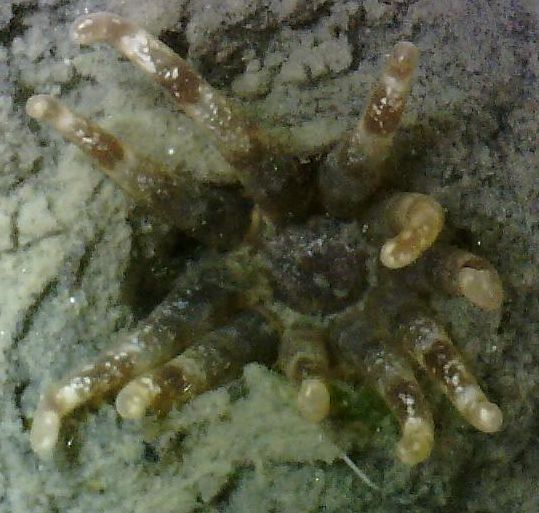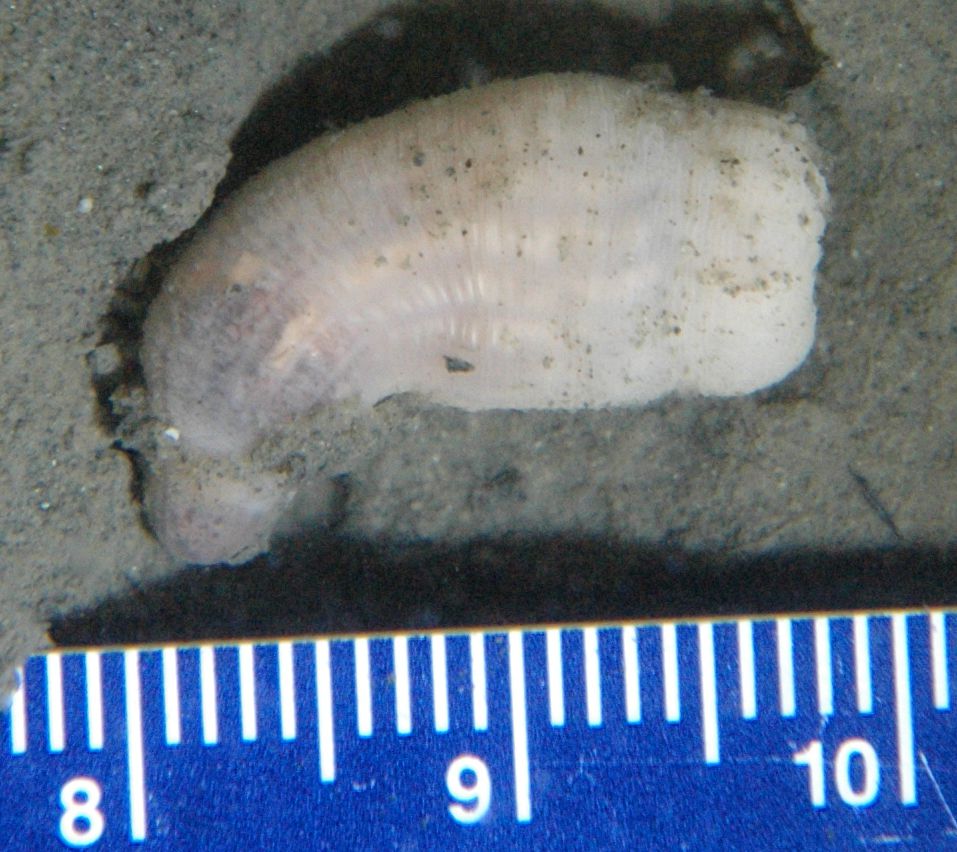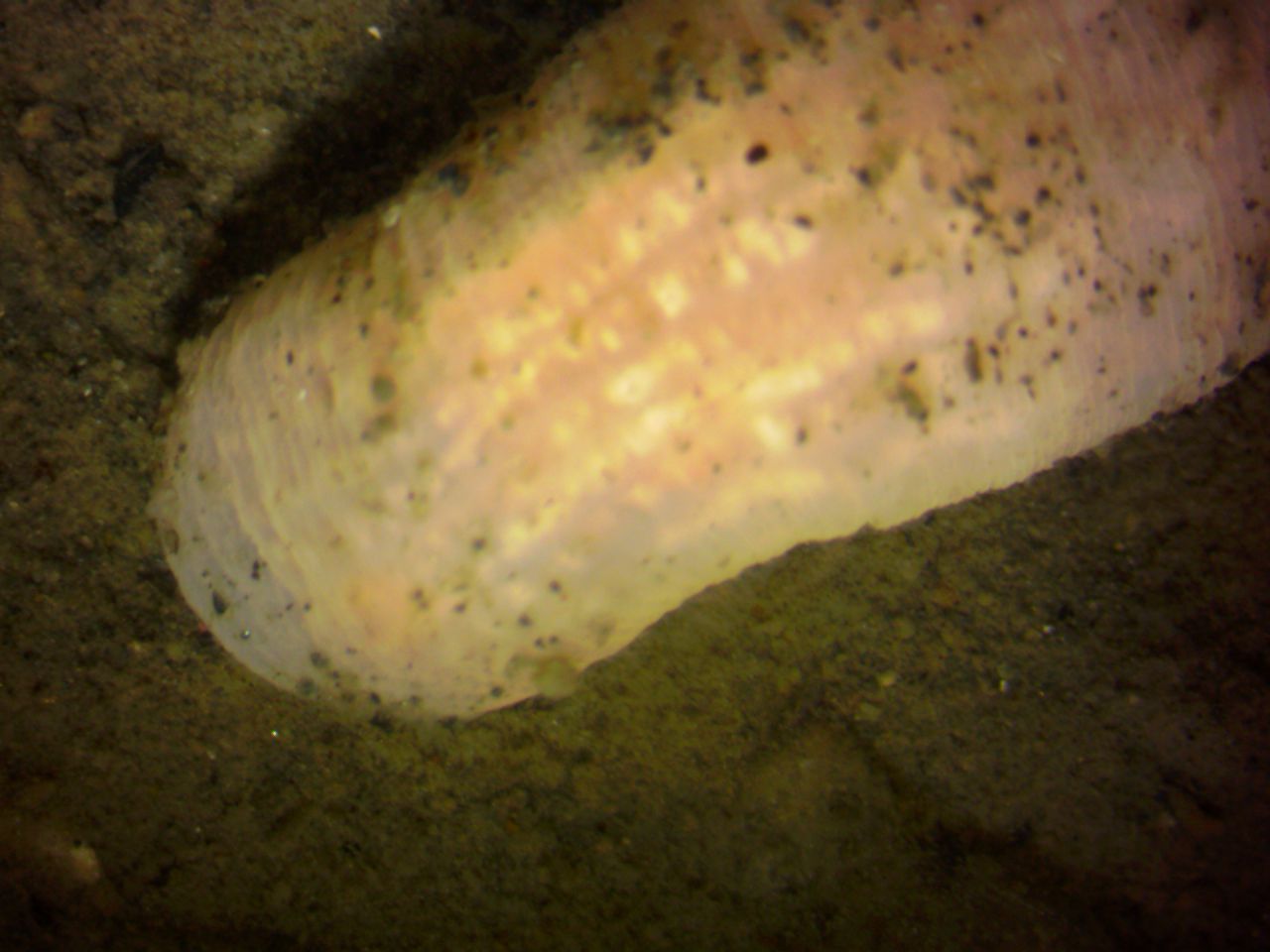Halcampa decemtentaculata Hand, 1954Common name(s): Ten-tentacle burrowing anemone |
|
| Synonyms: |  |
|
Phylum Cnidaria
Class Anthozoa
Suborder Nyantheae
Infraorder Athenaria
Family Halcampidae
|
|
| Halcampa decemtentaculata, 2 cm long and 5 mm in column diameter, tentacle spread about 2 cm, in its normal position with the column buried. Found by Kirt Onthank buried about 25 cm deep in a mixture of sand/silt/clay at a depth of 9 m at Hastie Lake County Park, WA. The animal reburied only up to its tentacles and spread them as shown here after being placed on sediment in the laboratory. | |
| (Photo by: Dave Cowles, August 2017) | |
Description: This small burrowing
anemone has ten speckled tentacles, which distinguishes it from all other
local species. The base of burrowing anemones does not attach to a solid
substrate.
Family Halcampidae have a rounded aboral
end (foot). The column
usually has adhesive papillae
and is usually elongated and differentiated into regions. They have one
or sometimes two sphincter muscles in their mesoglea. Their mesenteries
usually have 12 complete and 8, 10, or 12 incomplete.
How to Distinguish from Similar Species: No other local burrowing anemone has 10 tentacles. Our local cerianthid anemone, Pachycerianthis fimbriatus, is not a true anemone, is much larger, has many more long, slender tentacles, and lives in slippery burrows constructed using discharged cnidae.
Geographical Range: Southern British Columbia, Canada to central California
Depth Range: Intertidal to 398 m
Habitat: Benthic in sand/silt/clay, or among Phyllospadix (surfgrass) holdfasts, holdfasts of laminarian kelp, or in gravelly tidepools.
Biology/Natural History:
| Return to: | |||
| Main Page | Alphabetic Index | Systematic Index | Glossary |
References:
Dichotomous Keys:Carlton, 2007
Kozloff, 1987, 1996
General References:
Lamb
and Hanby, 2005
Scientific Articles:
Web sites:
Marine
Species Identification Portal: http://species-identification.org/species.php?species_group=anthozoa&id=19&menuentry=groepen
(characteristics of Family Halcampidae)
General Notes and Observations: Locations, abundances, unusual behaviors:

This view shows the animal after it is removed from the sediment. The
oral disk is
to the right and the rounded aboral
end of the column
is to the left. Scale is millimeters. Photo by Dave Cowles, August 2017

This closeup of the lower column
and aboral end
(foot) shows some of the small papillae,
which may be adhesive, on the column.
Mild peristaltic contractions are passing down the column
as the animal attempts to bury its foot in the sediment again. A thin band
of mucus had formed around the lower column
and was being moved along as the animal attempted to burrow.
Authors and Editors of Page:
Dave Cowles (2017): Created original page
CSS coding for page developed by Jonathan Cowles
Salish Sea Invertebrates web site provided courtesy of Walla
Walla University